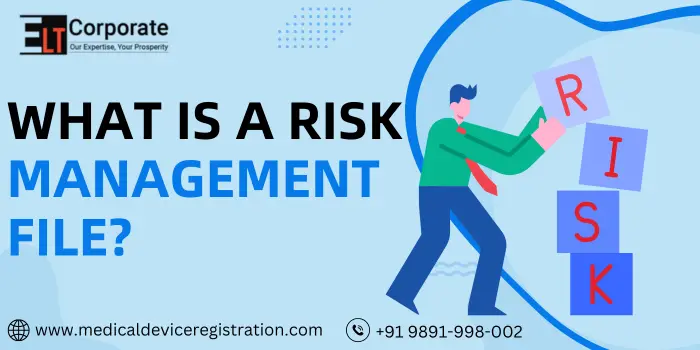Ensuring the safety and efficacy of medical devices is crucial for protecting patients and meeting regulatory standards. A Risk Management File plays a central role in this process. It is a comprehensive document that records all activities related to identifying, evaluating, and controlling risks associated with a medical device. This file guarantees that the device is safe for use and complies with relevant regulations.
This article will explore what a Risk Management File is, what it includes, and why it is essential. We will also discuss who is responsible for maintaining it, when it should be updated, and how it helps.
What Is A Risk Management File?
A Risk Management File is a comprehensive document that contains all the information related to the risk management activities for a clinical device. This document is essential for guaranteeing that the device is safe & secure for use and complies with relevant regulations.
What Is Included In A Risk Management File?
The Risk Management File includes the following factors, that are mentioned below:-
Risk Management Plan: Details the scope, responsibilities, and activities for managing risks.
Risk Analysis: Identifies potential hazards and estimates the risks associated with them.
Risk Evaluation: Assess whether the identified risks are acceptable.
Risk Control Measures: Describes how risks will be controlled or mitigated.
Residual Risk Evaluation: Evaluate the remaining risks after applying risk control measures.
Production and Post-Production Information: Monitors and reviews risks during and after manufacturing.
Risk Management Report: Summarizes all the risk management activities and results.
Why Is A Risk Management File Important?
The Risk Management File is essential, and reasons are mentioned below:-
- Guarantees that all potential risks are identified and managed.
- Agrees with regulatory necessities.
- Improves the safety and effectiveness of the clinical gadget.
- Gives a systematic approach to risk management.
- Supports persistent improvement in managing risks.
Who Is Responsible For Maintaining The Risk Management File?
The medical device manufacturer is responsible for creating and keeping up with the Risk Management File. This implies guaranteeing that all risk management activities are registered, recorded, and up to date through the device lifecycle.
When Should The Risk Management File Be Updated?
The risk management file should be updated:-
- During the design and development of the clinical device.
- Whenever there are changes to the device or its planned use.
- Identifying new dangers or hazards.
- During production and after production monitoring.
- New regulatory requirements are presented.
How Does The Risk Management File Help In Regulatory Compliance?
Basically, the Risk Management File helps in regulatory compliance, and here is how all the points are mentioned below:-
- Demonstrating that the manufacturer has deliberately identified, assessed, and controlled risks.
- Providing evidence that the device meets safety and performance standards.
- Facilitating audits and examinations by regulatory authorities.
- Guaranteeing transparency and accountability in risk management processes.
What Is The Difference Between A Risk Management Plan And A Risk Management File?
Risk Management Plan – A document that outlines the activities, approach, and responsibilities regarding risk management.
Risk Management File – A thorough collection of all reports and documents connected with the risk management process, including the Risk Management Plan, risk analyses, and reports.
If you are still confused about the differentiation of risk management files, then visit medicaldeviceregistration.com right now.
Can A Risk Management File Be Digital?
Indeed, a Risk Management File can be maintained in a digital format. Digital files can be easier to manage, update, and share. However, it is necessary to guarantee that digital files are secure and backed up against data loss.
What Are The Key Components Of A Risk Management Report?
- Summary of risk management activities.
- Results of risk analysis and evaluations.
- Description of risk control measures implemented.
- Evaluation of residual risks.
- Conclusions regarding the overall risk acceptability.
- Recommendations for further actions if needed.
Conclusion
A Risk Management File is an essential part of the risk management process for medical devices. Documents all activities and decisions related to identifying, evaluating, and controlling risks, ensuring the device is safe and effective. Proper maintenance and updating of this file are crucial for regulatory compliance and continuous security of the management.
What are the 5 Types of Risk Management?
There are a total of five types of RISK Management, all given below:-
Spreading.
Transfer (through Insurance and Contracts)
Loss Prevention and Reduction.
Avoidance.
Retention.
What is the Definition of Risk Documents?
The recording, reporting assessments, maintaining, handling analysis and plans, and monitoring results are defined and come under risk documents.

